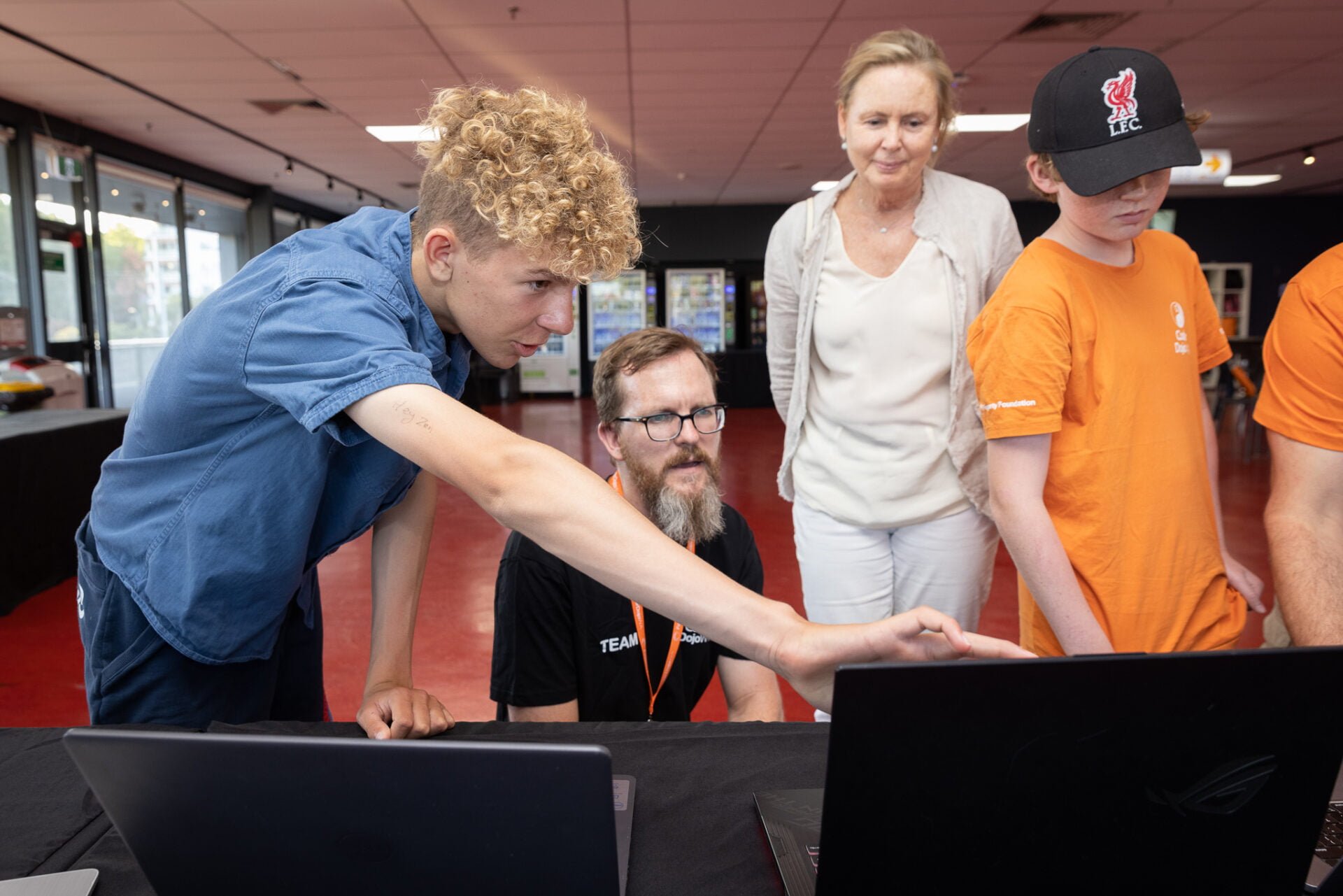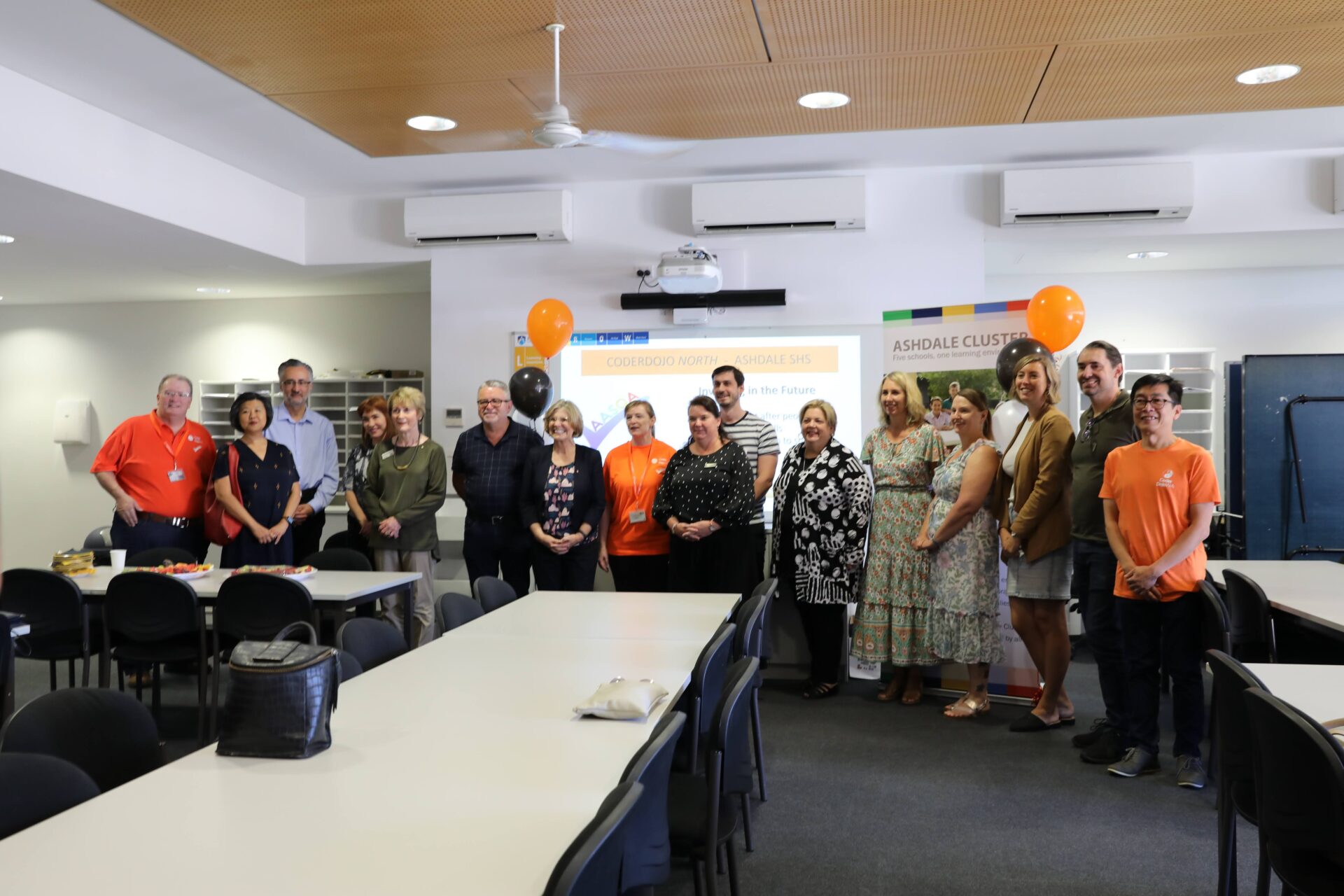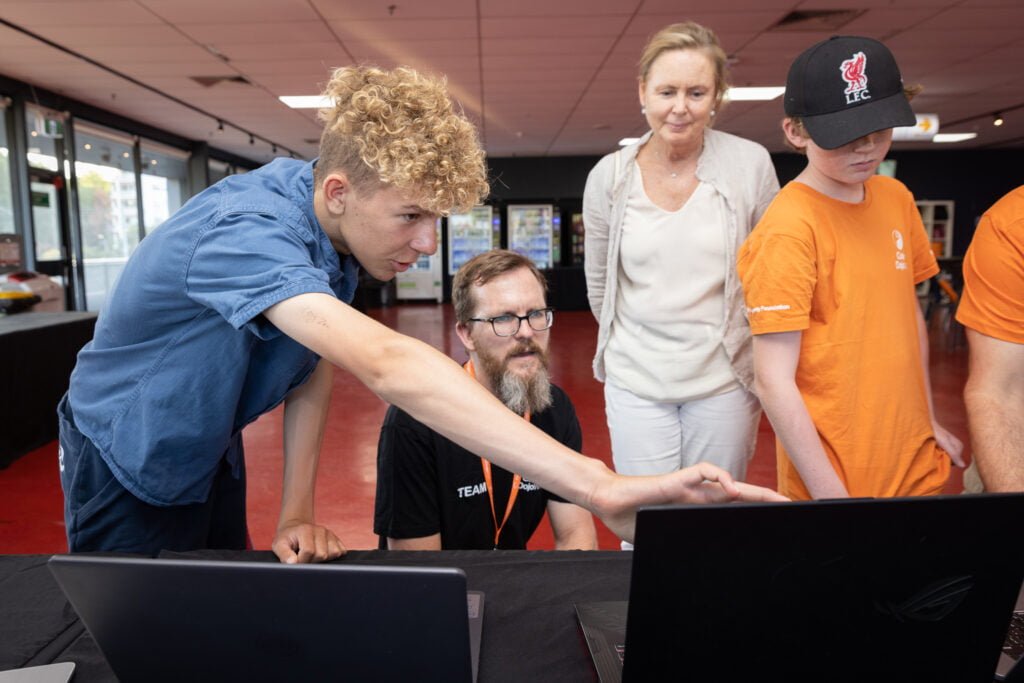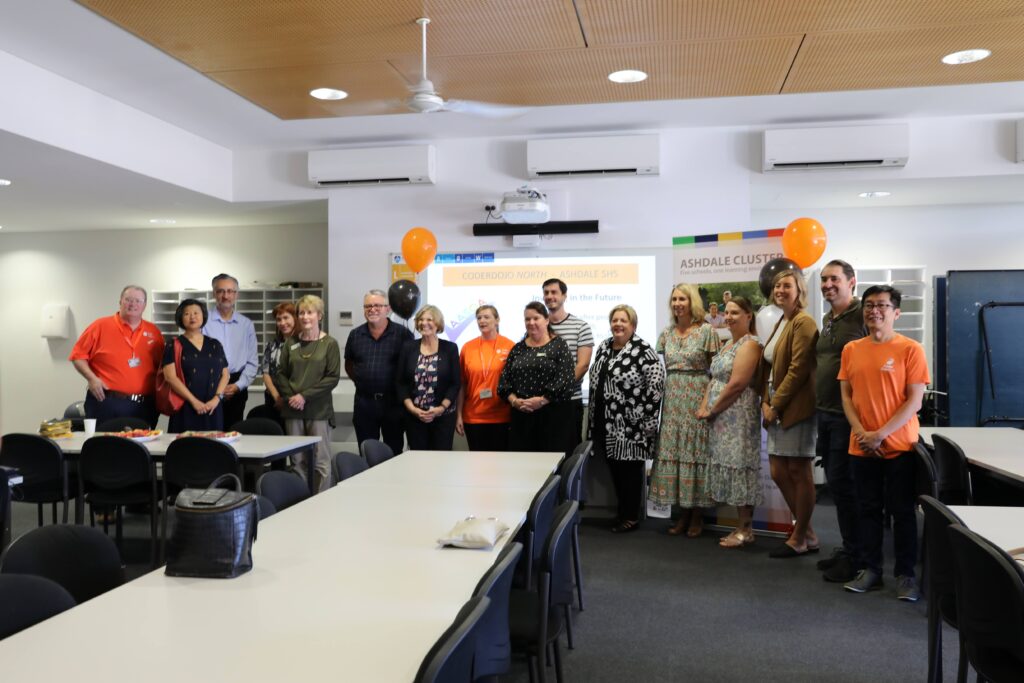Jonathan Durnford on ‘Going Virtual’
Jonathan Durnford is the CoderDojo Champion for the dojos run out of Midland library, which were recently closed in keeping with current social restrictions. Understanding how important the human-connection aspect of CoderDojo is, Jonathan decided to move his dojo completely online, providing an opportunity for the Ninja’s to continue coding and connecting with others.
“I’ve been delighted with how we’ve managed to enable some measure of that human connection during this pandemic”.
Over the last few months coding clubs around with world have adapted to virtual dojo’s. Whilst some have chosen to run their sessions privately on platforms like Zoom or Twitch, Jonathan decided to host his dojo publicly via YouTube Live Stream, which allows you to interact with your audience with a live video feed and chat.
The use of a public platform like YouTube suited the ethos and audience of the Midland Library Dojo’s. Rather than taking bookings, they have always promoted a drop in, drop out culture, open to anyone who wants to attend, as and when it suits them. Utilising YouTube, made it easy for Jonathan to promote the virtual dojo and allowed him to open the sessions up to everyone.
The sessions are usually joined by another Perth based dojo, Falcon FabLab, and there is even a ninja who regularly tunes in from the United Kingdom, waking in the morning to attend the afternoon time slot here in Perth. Jonathan also chose YouTube as it is the most popular online platform with the age demographic of his Ninja’s, with the majority aged around 10-12.
The remote sessions are structured differently to normal dojos, more like a coding lesson, but still interactive and in real time. Unlike a regular YouTube tutorial which can be paused and started again, a live stream is continuous, which Jonathan has found encourages Ninja’s to examine their coding critically. Jonathan works through the lessons at a slower pace, allowing Ninja’s time to keep up with the steps.

One of the biggest challenges he found was re-training the way Ninja’s receive feedback or assistance. Without being able to show Jonathan their screens as they would in a normal dojo, Ninja’s were encouraged to save and publish their projects to Scratch. By connecting with Ninja’s via their Scratch accounts, Jonathan is able to view their projects, bringing them up to the live stream screen and then working through the problem together as a collaborative team – a unexpected bonus which came out of running the sessions remotely.
In pre-COVID times, Jonathan ran three different dojos in three different locations. He kept the virtual dojo sessions segmented the same way, expecting everyone to join their usual dojo, but was surprised to find Ninja’s were tuning into all the sessions. This gave them an opportunity to connect with Ninja’s they haven’t met before. Jonathan found they quickly developed a great camaraderie amongst each other.
The online sessions receive good attendance each week, however Jonathan did notice a small decline in numbers as the weeks went on, which made it clear to him how much some Ninja’s rely on face-to-face interaction. Ninja’s who would normally never miss a regular dojo quickly realised they didn’t as much enjoy the virtual style of dojo. Jonathan found overall that the personal interaction of normal Dojo sessions is much more motivating.
“One thing I learnt is how many kids rely on face to face interaction and that is what makes the CoderDojo program so successful.”
From a champions perspective, Jonathan found the switch from facilitating a club to preparing coding lessons, to be surprisingly challenging. Used to hosting a very organic, ad-hoc CoderDojo without any kind of lesson plan, Jonathan found the prep-time involved in hosting live stream tutorials took longer than expected. But also said not to be afraid of getting it perfect. Live streams don’t need to be rehearsed or exact. It is better to just jump in, be open and talk through the process as you’re doing it.
Jonathan said an important aspect of going virtual is making Ninja’s feel welcome and part of the session. He suggested always being supportive of what the Ninja’s are doing and to remember that what works for one dojo, may not work for another.
“Find out what works for you. There’s no one correct way of doing it. It’s what works for you, what time you have, what resources you have and what your Ninja’s appreciate.”
Going forward, he hopes to continue utilising online methods, perhaps offering live streaming tutorials complementary to normal dojo sessions. With all of the live stream lessons recorded, Jonathan now has a library of recorded tutorials available for anyone to use at any time. The online lessons have even inspired some Ninjas to create their own video tutorials and You Tube channels, showing other young coders how to re-create their projects.
If you are interested in taking your dojo online, check out our guide to virtual dojos.




